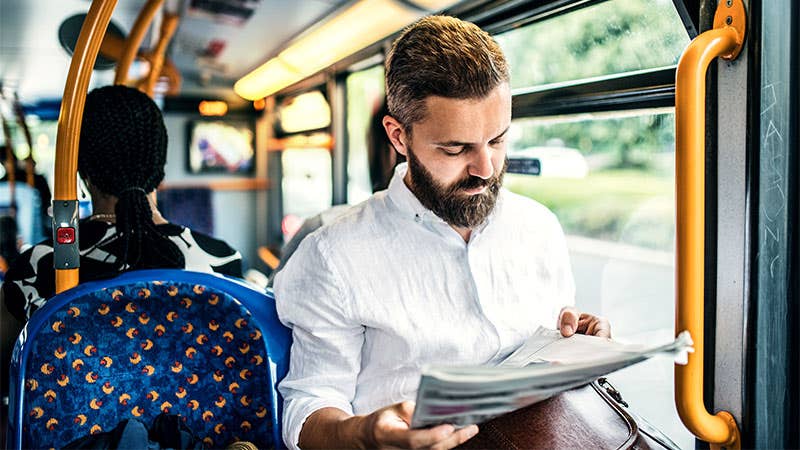How to get out of debt with a low income

The Bankrate promise
At Bankrate we strive to help you make smarter financial decisions. While we adhere to strict , this post may contain references to products from our partners. Here's an explanation for .
Key takeaways
- Getting out of debt on a low income requires discipline, but it isn’t impossible.
- Knowing how much you owe, budgeting, avoiding taking on new debt and improving your credit can all help you create an effective strategy to reduce your debt.
- Consolidating your credit accounts through a debt consolidation loan or hiring a debt relief company to deal with creditors could help speed up the debt payoff process.
The average consumer has about $6,000 and $11,700 worth of credit card and personal loan debt, respectively. Add car payments, medical bills and other forms of debt into the mix, and you can find it even more challenging to find relief from your overwhelming debt balances. Fortunately, there are some strategies you can employ to pay off your balances, even on a low income.
How to get out of debt when you have no money
These steps could help you tackle debt, regardless of how much you earn.
Step 1: Stop taking on new debt
If you borrow money from one source to pay another, you’re shuffling debt around instead of paying it off. Sometimes this can be beneficial, like opening a new balance transfer credit card to take advantage of a 0% APR introductory period or consolidating your debt into a personal loan with a lower interest rate.
Generally, however, when trying to get rid of debt, the first step is to avoid taking on new debt at all costs. Don’t open new credit cards or apply for loans unless you have strategic reasons, and freeze all unnecessary spending.
Why this matters: You could find yourself in far more debt than you started with and risk falling behind on monthly loan and credit card payments.
Step 2: Determine how much you owe
If you’re overwhelmed by debt, it’s tempting to ignore the bills that keep coming. Facing what you owe can be intimidating, but if you’re going to pay it off, you need an exact figure.
Make a list of every outstanding credit card statement, medical bill, loan payment or utility bill, and add up what you owe. Next to the principal balance, write the interest rate, late fees and any possible penalties you might have to pay. Without a clear picture of your financial situation, figuring out how to pay off debt with a low income is impossible.
Why this matters: It’s challenging to create a viable debt-payoff plan without knowing how much you owe.
Step 3: Create a budget
A budget lets you see where your income is coming from and where it’s going. Start by listing all your sources of income and recurring, fixed expenses. Fixed expenses are items such as rent or car payments, which don’t change month to month.
Now, subtract the difference between your total income and your fixed expenses. The remainder is the money you have available towards variable expenses, such as groceries and clothes — and your debt.
Determine how much cash to set aside monthly for variable expenses that cannot be cut out, like groceries, and then earmark the remaining cash for paying off debt. Put a line item in your budget for debt payments, stick to it and increase it whenever possible.
Why this matters: You’ll need to free up cash in your spending plan to pay extra on your debts each month and eliminate the balances faster.
Step 4: Pay off the smallest debts first
After adding up everything you owe, the total number might look intimidating. Getting out of debt on a low income isn’t easy, but celebrating small wins can keep you going.
The debt snowball strategy consists of paying off your smallest debt first — regardless of the interest rate — and then applying the payments you were using toward that balance to pay the next-smallest debt.
Here’s how this would work: let’s say you have a credit card with a $200 balance, with a minimum monthly payment of $25, and another one with a $500 balance. Once you pay off the $200 card, you will allocate the $25 payment toward the $500 card, in addition to your regular monthly payment, and move up from there.
Seeing those small balances go to zero will give you the pride and belief that you can eventually live debt-free and will clear more accounts from your ledger faster than if you tackled the largest debts first.
Why this matters: Focusing on your smallest debts first helps you build momentum and stay motivated on your debt-payoff journey.
Step 5: Start tackling larger debts
Once you’ve paid off the smaller bills, there are several approaches you can take to tackle large debts. One approach is the debt avalanche method, where you make the minimum payments on each bill, then use the rest to pay off the debt with the highest interest rate. Those interest charges add to your debt every month, so stopping the worst bill from accruing will put money back in your pocket.
With this method, you’re keeping more of the money you make each month, increasing your ability to make larger debt payments.
Why this matters: Shifting your focus to debts with larger balances helps you save a bundle in interest.
Step 6: Look for ways to earn extra money
If you’re still struggling with how to pay off debt with no money, look for opportunities to increase your income. For better or worse, the “gig economy” has created a variety of opportunities online, including dog-sitting, ride-sharing, food delivery and graphic design. If you can find creative ways to maximize your free time, put that extra cash toward your debt.
Why this matters: Even if you only increase your income for a short period, the extra funds you earn could help you get out of debt much faster.
Step 7: Boost your credit scores
Improving your credit score can also help you get out of debt. When you have a low score, you almost always pay higher interest rates on everything from credit cards to personal loans.
“When you have higher interest rates, more of your payments are going towards interest, as opposed to paying down the principal,” says Adem Selita, CEO and co-founder of The Debt Relief Company in New York City. “This perpetuates your debt load and means you have to use more of your dollars to knock down the principal on any balances or debts owed.”
In addition, when you have bad credit the options for consolidating debt or transferring your debts to lower APR accounts are much more limited. If you’re facing this challenge, there are various ways to help build your credit score.
These include checking your credit reports to ensure there are no mistakes, staying on top of payments and paying bills on time every month, not applying for new accounts too often and reducing your credit utilization ratio.
“Any time your credit utilization is above 30 percent, meaning your balance on a credit card is more than 30 percent of your credit limit, it will have a negative impact on your credit score,” says James Lambridis, CEO of DebtMD. “Try to pay down your balances so you are at least below the 30 percent threshold.”
Why this matters: A higher credit score can get you access to debt consolidation products with more competitive terms and lower interest rates.
Step 8: Explore debt consolidation and debt relief options
If the interest keeps piling up, you may want to explore debt consolidation options first and then — as a last resort — debt relief.
Debt consolidation
Debt consolidation is often a personal loan that pays off your outstanding debt and combines the balances into a single payment to your new lender. Ideally, the interest rate on your debt consolidation loan will be lower than some or most of your outstanding balances, making the loan more convenient and more cost-effective over time.
Debt relief
Debt relief companies offer to negotiate with creditors on your behalf to settle your debts for less than what you owe in exchange for a fee. Before doing so, they often urge you to stop making payments altogether to apply leverage to convince the creditor to accept some payment instead of nothing at all. While this strategy can work, it will negatively impact your credit score, which is something to consider. If the company fails to settle your debts this could also mean you’re liable for any late payment fees assessed by your creditors.
Why this matters: You can get a more predictable monthly payment, save in interest, improve your score and get a definitive debt-payoff timeline by consolidating your credit card and personal loan balances. But if you select debt relief, you could pay less than what you owe and get out of debt faster.
The bottom line
Even if you have a low income, getting out of debt doesn’t have to be far-fetched. Instead, follow these strategies to start making strides towards eliminating those pesky balances. Also, consider a debt consolidation loan if you have several debts with high interest rates to help you get out of debt faster. Ultimately, taking action sooner than later will help you improve your credit score and get one step closer to attaining financial freedom.
